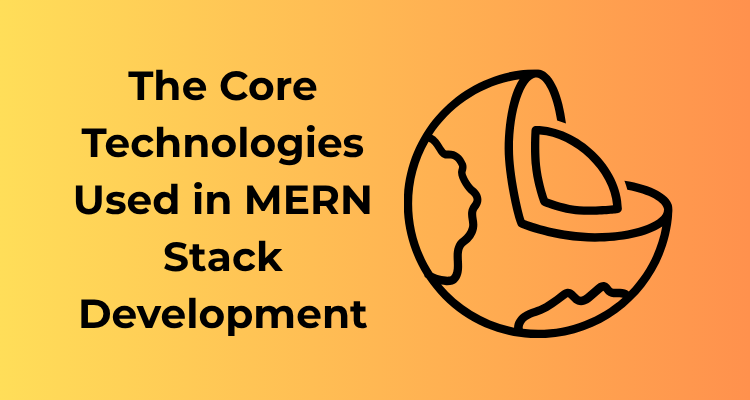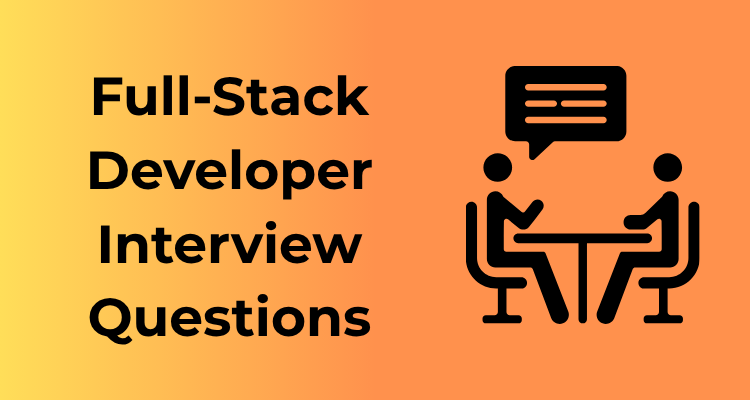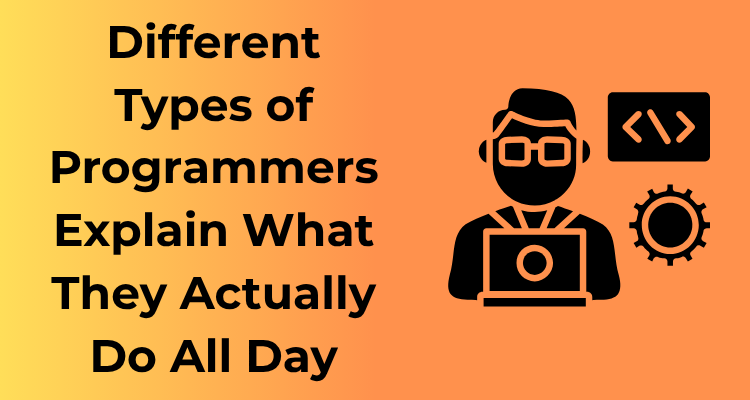Let’s start our journey into the MERN stack with MongoDB, shall we? MongoDB is like the sturdy foundation of development—it’s where all your data lives and thrives. But unlike traditional databases that think of data in rigid, tabular rows and columns, MongoDB embraces flexibility with open arms. Let’s dive deeper and unpack why MongoDB is such a big deal.
What Makes MongoDB Special?
MongoDB is a document-oriented NoSQL database. Translation? Instead of splitting everything into tables like in SQL databases, it stores data in something called documents (which are basically fancy JSON objects). This means the data is structured intuitively—objects in your code look very similar to the data the database stores. No more mental gymnastics to map code to database tables!
For example, storing a user profile might look like this:
{
"name": "Alex",
"email": "alex@example.com",
"hobbies": ["coding", "hiking", "music"]
}
Simple, right? That’s the beauty of MongoDB! You can adapt your data structure as your project evolves without needing to rewrite chunks of database schema. It’s like art—free-flowing and adaptable.
Why Developers Love MongoDB
- Flexibility: You don’t have to lock yourself into a rigid structure. Whether it’s adding an extra field to a document or changing data types, MongoDB keeps up without protests.
- Scalability: If your app goes viral and usage explodes, MongoDB can handle massive amounts of data with its seamless sharding and distributed database model.
- JSON-friendly Syntax: If you know JSON (and let’s be real, who in web development doesn’t?), working with MongoDB feels natural and intuitive.
- Speed: MongoDB’s ability to handle unstructured, high-volume data makes read and write operations impressively fast.

Pro Tips for Rocking MongoDB
- Design Your Schema Wisely: Yes, MongoDB is flexible, but a little schema planning goes a long way. Think about relationships between your data and usage patterns to avoid future headaches.
- Use Indexes: Indexing in MongoDB is your secret weapon for boosting query speeds. If you need frequent lookups on specific fields, make sure to create an index for them.
- Take Advantage of Aggregation Pipelines: MongoDB’s aggregation framework is a powerhouse for analyzing and transforming data. It’s your go-to tool when you need more complex queries.
- Secure Your Data: Don’t forget to enable access control and enforce authentication. Pair it with encryption to keep your data safe from unwanted guests.
Diving into Express.js: Simplifying Backend Logic
Let’s talk about Express.js, the backend framework in the MERN stack that makes developers’ lives easier. While backend development can sometimes feel like venturing into a mysterious maze, Express.js acts as your guiding flashlight — clear, efficient, and dependable. Ready to dive in?
Why Express.js?
At its core, Express.js is a minimal and flexible web application framework for Node.js. It’s specifically designed to help you build web applications and APIs without breaking a sweat. Imagine trying to handle HTTP requests and manage routes from scratch; Express.js removes that headache and hands you a structured foundation to build on. In short, it simplifies your backend logic and lets you focus on what matters: your application’s functionality.
To put it simply, you could think of Express.js as the “glue” keeping everything tidy and functional in a Node.js backend. Cool, right?
How Does Express.js Simplify Backend Development?
- Routing Made Easy: Express.js provides a straightforward and powerful way to define and manage routes. Whether you’re handling a ‘GET’ request to pull data or a ‘POST’ request to send data to your server, Express.js structures your logic seamlessly.
- Middleware at Its Finest: Middleware in Express.js might feel like magic. It allows you to execute functions (like authentication, logging, or error handling) between the request and the response without complicating your code. Need a checkpoint for verifying user tokens? Middleware has you covered.
- Efficient Handling of HTTP Methods: RESTful logic becomes second nature thanks to the clean way Express.js handles CRUD operations (Create, Read, Update, Delete). It’s intuitive and makes your API development a breeze.
- Support for Templates: Building server-rendered pages? Express.js lets you use template engines such as Pug, Handlebars, or EJS to dynamically generate HTML, giving you greater flexibility.
The Learning Curve
If you’re new to backend development, fear not! Express.js is beginner-friendly yet powerful enough for experienced developers to craft complex applications. You don’t need to master every nook and cranny of the Node.js API because Express.js abstracts away a good chunk of the heavy lifting.
Pro tip: Start with the basics—create a simple server, practice using routes, and explore middleware. Once you’ve got the hang of it, your confidence to tackle larger projects will grow exponentially.
When to Use Express.js
Express.js is an excellent choice for nearly all kinds of backend projects:
- Single Page Applications (SPAs): Pair it with React.js from the MERN stack to build dynamic, robust SPAs.
- Multilingual Apps: Its built-in support for localization makes building apps for a global audience easier.
- APIs: Whether it’s RESTful APIs or GraphQL servers, Express.js is perfect for handling requests and responses.
React.js: Where User Experience Meets Performance
Welcome aboard! Let’s set sail on an adventure into React.js, the “R” in the MERN stack! If you’ve ever marveled at how fast and smooth websites like Instagram or Netflix feel, you’ve indirectly witnessed React.js in action. Created by Facebook, this library is a powerhouse for creating dynamic and interactive user interfaces (UIs).
What Makes React.js So Special?
Here’s the deal: in today’s digital world, users don’t just want beautiful-looking websites—they demand speed and responsiveness. React.js achieves this by efficiently managing the DOM (Document Object Model) using something called the “Virtual DOM.”
- Virtual DOM: Think of the Virtual DOM as a lightweight copy of the real DOM. When something changes on your webpage (like a new comment popping up), React only updates the specific part of the UI, instead of reloading the entire page. This keeps things running lightning fast!
- Component-Based Architecture: React is all about breaking UIs into reusable chunks called components. Components are like LEGO blocks—they can be small (like a button) or big (like a complete contact form). This modular system makes development faster, your code cleaner, and debugging a breeze.
Key React Concepts That You’ll Love
If you’re new to React, here are some indispensable concepts you’ll encounter:
- JSX: No, this isn’t some cryptic technical term—JSX stands for JavaScript XML. It lets you write HTML-like code directly in JavaScript. Here’s an example snippet:
{''}. Cool, right? - State Management: Ever wondered how apps keep track of data, like the number of items in your shopping cart? React’s “state” feature makes it possible. Think of state as the memory of your app that’s constantly being updated and re-rendered.
- Props: Short for properties, props are how components communicate with each other. For instance, you can pass data from a parent component to a child component, giving each element its personalized touch.
Performance Meets Flexibility
One of React’s shining stars is its balance between performance and flexibility. Developers love it because it lets them mix and match these components into any kind of UI—single-page applications (SPAs), progressive web apps, or even mobile applications (using React Native).
For you, as a developer, the possibilities are endless. Want to create chat apps? Social media dashboards? Interactive portfolios? React is your canvas, and the code is your brush!
Why Should You Care About React.js?
Here’s why React.js is worth your time:
- Scalable: From the smallest startup to the biggest enterprise, React can grow with you.
- Community-Driven: With millions of developers worldwide, you’ll never be short of libraries, tutorials, or someone willing to answer your questions on platforms like Stack Overflow.
- High Demand: Skilled React developers are in high demand. Mastering React opens doors to exciting career opportunities.
Node.js: Bridging the Frontend and Backend Divide
When delving into MERN stack development, you’ll inevitably come across Node.js. This phenomenal runtime environment has revolutionized how developers approach server-side programming. But what makes Node.js such a quintessential part of the MERN stack? Let’s break it down together!
What is Node.js?
At its core, Node.js is a JavaScript runtime built on Chrome’s V8 JavaScript engine. If that sounds a bit too technical—think of it as a way to allow JavaScript, which traditionally runs in your browser, to be used for backend development. Remember those days when JavaScript was confined to client-side tasks? Thanks to Node.js, it’s no longer limited to just browser environments.
Why Use Node.js in the MERN Stack?
Node.js plays a crucial role in the MERN stack, acting as the foundation for backend operations. Its importance lies in its ability to:
- Unify Development: With Node.js, developers can use JavaScript for both the frontend and backend of a web application. This eliminates the need for switching languages, making development faster and more seamless.
- Asynchronous Functionality: Node.js handles multiple requests simultaneously with its non-blocking, asynchronous event-driven architecture. This makes it an excellent choice for scalable applications.
- Speed and Efficiency: Its V8 engine compiles JavaScript into native machine code, ensuring that applications run with remarkable speed and performance.
Key Features of Node.js to Love
- npm (Node Package Manager): Imagine having access to over a million open-source packages to supercharge your projects. With npm, you can easily incorporate libraries and tools, saving time and effort.
- Event-Driven Architecture: Node.js achieves outstanding scalability because it’s designed to handle a large number of simultaneous connections efficiently.
- Cross-platform Compatibility: Whether you work on macOS, Windows, or Linux, Node.js has you covered.
How Node.js “Bridges the Divide” Between Frontend and Backend
Think of Node.js as the glue that connects the elegant interfaces crafted with React.js to the robust databases powered by MongoDB. Here’s how it achieves this:
- RESTful APIs: With Node.js, you can create lightweight and seamless APIs (commonly using its partner-in-crime, Express.js) to handle communication between the frontend and backend with ease.
- Real-Time Capabilities: Node.js shines in real-time applications like chat apps, where low latency is essential.
- JSON-Supported Data Flow: Since both Node.js and MongoDB use JSON, data flow between client, server, and database remains streamlined, without the need for heavy transformations.
Expert Advice for Using Node.js Effectively
Whether you’re a budding developer or a seasoned pro, here are some tips to make the most of Node.js in your MERN stack projects:
- Master Asynchronous Programming: Promises and async/await are your best friends in avoiding “callback hell.”
- Use Middleware Wisely: Middleware in Node.js, especially with Express.js, can help you handle authentication, logging, and error-checking efficiently.
- Leverage Caching: Tools like Redis paired with Node.js can drastically improve performance for high-traffic applications.
How Components Work Together: Data Flow in the MERN Stack
The beauty of the MERN stack lies in how seamlessly its individual components—MongoDB, Express.js, React.js, and Node.js—integrate, creating a powerful full-stack development solution. But how exactly do these technologies interact? Fear not! In this fun and simplified walkthrough, let me guide you through the data flow of a typical MERN stack application.
The Journey Starts: Frontend Requests
Imagine you’re using a web app built with React.js, the frontend tool in MERN that creates stunning and interactive user interfaces. You type in a query or fill out a form. That action translates to a request that starts its fascinating journey through the stack.
React.js, as a JavaScript library, handles all the user interactions. It packages your input into a neat little JSON request and sends it to the backend. React lets everything feel lightning-fast with its virtual DOM magic, but the real work starts behind the scenes as the data travels down the line.
Backend: Node.js and Express.js Take the Lead
As your request reaches the backend, Node.js steps in as the event-driven environment that powers the server side of the application. Think of Node.js as the bridge between the spontaneous demands of the client (React.js) and the careful data handling that awaits further down the stack.
But Node.js doesn’t work alone! It hands off your request to Express.js, a minimalist framework designed to simplify backend logic. Express serves as the conductor, organizing the flow of information and deciding where this request needs to go. It might, for instance, query the database or perform some processing before sending a response back to React.js.
The Database: MongoDB’s Time to Shine
At the very heart of the MERN stack is MongoDB, which functions as a non-relational database. It’s the perfect choice for modern applications because it stores data in a flexible, JSON-like format called BSON. Here’s why that matters: the data your app collects (like user profiles, orders, etc.) flows perfectly into MongoDB thanks to its compatibility with JavaScript objects.
When the request from Express.js involves fetching, updating, or saving data, MongoDB jumps into action. It retrieves or modifies data as needed before sending it right back through Express.js and Node.js to reach React.js on the frontend.
Response Time: Full Circle with React.js
Once the data completes its journey through the stack, it’s time for React.js to swing into action again. React takes the response (whether it’s a confirmation message, updated user profile, or newly fetched data) and updates the user interface dynamically—no page reloads necessary!
Thanks to React’s component-based architecture, these updates feel smooth and seamless. The user stays happy, and the app feels modern and responsive.
Data Flow Recap
To visualize the flow:
- React.js: Handles user interaction and sends requests to the backend.
- Express.js (via Node.js): Processes requests, performs logic, and communicates with the database.
- MongoDB: Reads, writes, and updates data as instructed.
- Node.js & Express.js: Returns the retrieved or modified data to the frontend.
- React.js: Displays the response to the user.
Making the Stack Work for You
Understanding how data flows across the MERN stack is essential for building scalable, maintainable applications. Focus on maintaining clean communication paths between components, and remember to stick to best practices for things like API design and database queries.
Security and Scalability with MERN: Core Best Practices
Let’s talk about two massive pillars of any successful web application: Security and Scalability. When you’re building a robust application with the MERN (MongoDB, Express.js, React.js, Node.js) stack, these aspects become absolutely critical. Why, you ask? Because as your user base grows, you’ll need to protect their data while ensuring your application can handle the load like a pro.
Security: Laying a Strong Foundation
Security is not just a “nice-to-have”; it’s a must-have. Here’s how to ensure your MERN-powered app is well-secured:
- Environment Variables: Never expose sensitive information like database credentials, API keys, or secret tokens in your codebase. Use environment variables (e.g.,
.envfiles) to keep them secure and out of public access. - Input Validation: Whether it’s from forms, APIs, or any other input source, always validate incoming data. Use libraries like
express-validatorin your backend to sanitize requests and prevent common vulnerabilities like SQL Injection or Cross-Site Scripting (XSS). - Authentication and Authorization: Implement proper authentication mechanisms using tools like
JWT(JSON Web Tokens) orOAuth. Ensure only authorized users can access sensitive parts of your application or APIs. - Encrypt Sensitive Data: For anything from passwords to sensitive user information, encryption is the name of the game. Utilize libraries like
bcryptfor password hashing and always opt for secure transmission channels like HTTPS. - Implement CORS (Cross-Origin Resource Sharing): Restrict which domains can communicate with your API. This is crucial for ensuring that no malicious sites abuse your application endpoints.
Scalability: Preparing for Growth
It’s not a question of if your app will grow, but when. And with growth comes the need to scale your application smartly to support your users without downtime or lag. Here’s how you can approach scalability in a MERN stack:
- MongoDB Sharding and Replication: MongoDB shines when it comes to scalability. Use sharding to spread your database across multiple servers, and implement replication for backup and reliability.
- Load Balancing: Use load balancers (e.g., Nginx or AWS Elastic Load Balancer) to distribute incoming requests across multiple servers seamlessly.
- Optimize Server Performance: With Node.js as your server runtime, you’re already a step ahead. Its event-driven, non-blocking architecture is designed for scalability. However, you should still monitor performance and avoid blocking operations like heavy computation directly within Node.js.
- Component-Based Development in React: On the frontend, leverage React’s component-based architecture to keep your UI snappy. Use techniques like lazy loading and code-splitting to ensure your app stays lightweight and efficient even as it scales.
- Use Microservices Architecture: If your application grows in complexity, consider splitting it into smaller, independent services. This makes it easier to scale different parts of your app based on demand.
Best Practices in Action
Now combine these two pillars—security and scalability—and you’ll have a well-rounded, strong, and future-ready application. Always remember that staying updated is key. Follow the latest best practices in the MERN stack and integrate tools like Docker and Kubernetes for containerization and orchestration, which make managing deployments a breeze. And don’t forget to monitor your app—tools like New Relic or Elastic Stack can be incredibly helpful for identifying bottlenecks or vulnerabilities.
Real-World Applications Powered by MERN Stack
So, you’ve likely heard all about what makes up the MERN stack: MongoDB, Express.js, React.js, and Node.js. But let’s move from the theory to the exciting part—where these technologies come alive. Yes, the real-world applications! The MERN stack is a favorite for developers and businesses alike, and for good reason. It’s efficient, cost-effective, and built for speed. Let’s dive into where it shines in real-world scenarios that you encounter every day.
The Faces Behind Popular MERN-Powered Applications
The MERN stack is the secret ingredient behind some of your favorite apps. Whether you’re connecting with friends, shopping online, or managing your personal projects, there’s a good chance a MERN-based solution is involved. Take, for example:
- E-Commerce Platforms: MERN is perfect for dynamic online stores. Why? Its React-powered frontend offers fast product browsing, while MongoDB’s flexibility ensures smooth inventory management.
- Social Media Apps: Real-time interactions, like chat features or live activity streams, can be beautifully handled by the MERN stack, thanks to Node.js and MongoDB working together seamlessly.
- Project Management Tools: Think tools for scheduling, tracking tasks, or team collaboration—MERN’s efficiency enables smooth multi-user functionality.
What elevates these apps is not just how they look, but how they perform. Express handles the heavy lifting on the server-side, giving a smooth ride from start to finish.
Why MERN is a Game Changer for Startups
Bringing a new idea to life can be both exhilarating and downright scary. For startups, the MERN stack acts as a catalyst by making the development process quicker and more accessible. Here’s why:
- Cost-Effective: MERN uses JavaScript across its four technologies, meaning your team doesn’t need to hire specialized backend or frontend developers. One language to rule them all!
- Scalability: As your user base grows, you want your app to keep up. The MERN stack, with its non-blocking architecture in Node.js and MongoDB’s scalability, can handle increasing demands with ease.
- Rapid Prototyping: Need an MVP (Minimum Viable Product) yesterday? MERN speeds up development without cutting corners, giving you time to perfect the user experience.
Some Nifty Industry Uses
Beyond the obvious app categories, the MERN stack also powers:
- Travel Apps: Plan itineraries, book tickets, and explore recommendations—it’s all made smooth with MERN’s robust data handling.
- Healthcare Platforms: Manage patient records securely and enable telemedicine with scalable MERN solutions.
- Educational Tools: MERN is ideally suited for modern Learning Management Systems (LMS) that provide interactive lessons or student dashboards.
It’s easy to see why MERN is becoming the go-to for any industry that relies heavily on interactive, data-driven applications.









